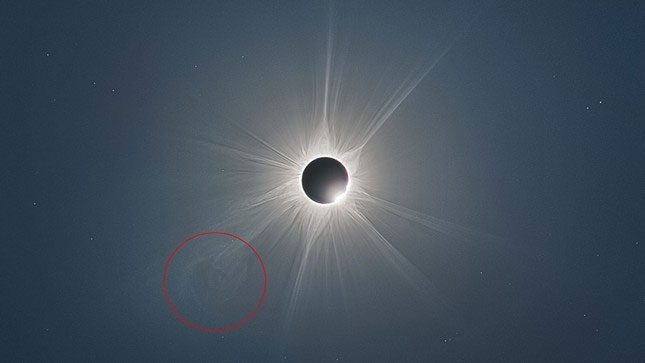At the end of this year, the Proba-3 mission from the European Space Agency will launch two spacecraft into orbit around Earth. By aligning the probes, researchers will create small eclipses lasting six hours, allowing unprecedented study of the Sun’s atmosphere.

The Proba-3 mission includes two spacecraft: the Coronagraph (left) and Occulter (right). (Image: European Space Agency).
At the end of this year, the European Space Agency (ESA) will launch the Proba-3 mission into orbit around Earth. This unique project involves a pair of twin spacecraft that will work together to create artificial eclipses in space, allowing researchers nearly unlimited access to study the Sun’s outer atmosphere, known as the corona.
The mission scientists note that the upcoming solar eclipse on April 8, during which the Moon will temporarily obscure the Sun, will also play a crucial role in preparing the twin spacecraft for their future tasks.

Solar eclipse viewed from the ground.
The Proba-3 mission involves a pair of probes known as Coronagraph and Occulter. Once in orbit, the Occulter will position itself between the Coronagraph and the Sun, completely blocking just enough sunlight to simulate a ground-level eclipse. This will allow the Coronagraph’s camera to focus on the corona, which appears as a swirling sea of delicate plasma filaments when viewed separately from the rest of the Sun.
The two spacecraft will take approximately 19.5 hours to complete a high elliptical orbit around Earth, remaining in eclipse for six continuous hours during each rotation. While forming the eclipse, the two spacecraft will be separated by about 144 meters, meaning they must be perfectly aligned to operate normally. If the two probes are not synchronized, the Occulter’s shadow could block sunlight from reaching the Coronagraph’s solar panel array.
During solar eclipses on Earth, the corona becomes more visible than at any other time, allowing us to see things that we normally cannot observe. For example, during the recent “ring of fire” eclipse that occurred in Australia on April 20, 2023, scientists clearly observed a massive plasma cloud known as a coronal mass ejection as it erupted from the Sun.
However, ground-based solar eclipses only last about 5 to 10 minutes and occur once or twice a year. Thus, this new mission will exponentially increase the amount of high-quality data researchers can analyze. Being able to see such detailed corona for extended periods each day will enable scientists to study how solar flares erupt from the Sun, how solar winds are generated, and measure the Sun’s overall energy output.
The two spacecraft are partly built by the private company Redwire Space. Mission scientists recently got their first look at nearly finished versions of both probes at the Redwire facility in Belgium, and the research team is excited to begin operations.
Next, researchers will conduct final tests on the Coronagraph’s cameras by pointing them at the total solar eclipse on April 8, an event that will be visible across much of North America. Depending on how the situation unfolds, the launch date for Proba-3 could be in September, although a specific date has yet to be announced.
If the mission proceeds as planned, the launch will coincide with the peak activity in the Sun’s 11-year solar cycle, known as the solar maximum, which is expected to occur later this year, allowing the mission to begin immediate exploration by year-end.


















































